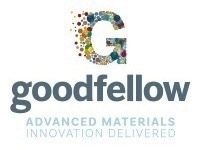Titanium Diboride (TiB2) is a hard material with high strength and high wear resistance at elevated temperatures. The high density, combined with the high elastic modulus and high compressive strength, have lead ot its use in armour components.
It is unaffected by most chemical reagents, and has excellent stability and wettability in liquid metals such as zinc and aluminum. This, along with its high electric conductivity, has led to its use in Hall- Héroult cells for aluminum production. It is also used as crucibles for molten metals.
Background
TiB2 is the most stable of several titanium-boron compounds. The material does not occur in nature but may be synthesised by carbothermal reduction of TiO2 and B2O3.
As with other largely covalent bonded materials, TiB2 is resistant to sintering and is usually densified by hot pressing or hot isostatic pressing. Pressureless sintering of TiB2 can achieve high densities but liquid forming sintering aids such as iron, chromium and carbon, are required.
Key Properties
Table 1. Typical Physical and mechanical properties of titanium diboride.
| Property |
Value |
| Density (g.cm-3) |
4.52 |
| Melting Point (°C) |
2970 |
| Modulus of Rupture (MPa) |
410 - 448 |
| Hardness (Knoop) |
1800 |
| Elastic modulus (GPa) |
510 - 575 |
| Poisson's Ratio |
0.1 - 0.15 |
| Volume resistivity (ohm.cm) at 20 °C |
15x10-6 |
| Thermal conductivity (W/m.K) |
25 |
TiB2 is resistant to oxidation in air up to 1000 °C. It is also resistant to HCl and HF but reacts with H2SO4 and HNO3. It is readily attacked by alkalis.
Hot pressing of TiB2 (with small additions of metallic or carbide sintering aids) is carried out at 1800 - 1900 °C and achieves close to theoretical density. Pressureless sintering requires higher levels of sintering aids and sintering temperatures in excess of 2000 °C.
Applications
Due to its high hardness, extreme melting point and chemical inertness, TiB2 is a candidate for a number of applications.
Ballistic Armour
The combination of high hardness and moderate strength make it attractive for ballistic armour, but its relatively high density and difficulty in forming shaped components make it less attractive for this purpose than some other ceramics.
Aluminium Smelting
The chemical inertness and good electrical conductivity of TiB2 have led to its use as cathodes in Hall-Heroult cells for primary aluminium smelting. It also finds use as crucibles for handling molten metals and as metal evaporation boats.
Other Applications
High hardness, moderate strength and good wear resistance make titanium diboride a candidate for use in seals, wear parts and, in composites with other materials and cutting tools.
In combination with other primarily oxide ceramics, TiB2 is used to constitute composite materials in which the presence of the material serves to increase strength and fracture toughness of the matrix.
About Goodfellow

Goodfellow supplies metals, ceramics and other materials to meet the research, development and specialist production requirements of science and industry worldwide.
The Goodfellow group consists of four companies. The main administration, research laboratories and workshops are located at the Company's headquarters in Cambridge, England. The subsidiary offices in America, France and Germany provide an additional service.